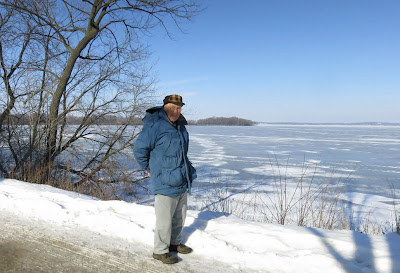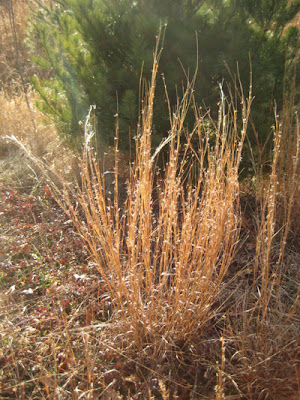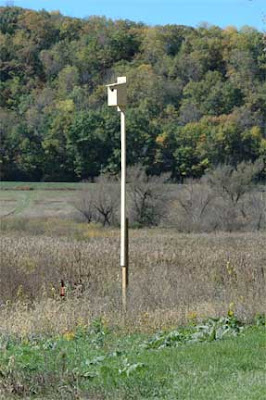Nice restored savanna at UW-Madison Lakeshore Path

UW-Madison has a spectacular shoreline along Lake Mendota. Including Picnic Point (seen in the background in this photo), there is over 4 miles of lake frontage. Yesterday the weather cooperated and Kathie and I walked from Picnic Point to the Memorial Union. Among other things, we walked past Willow Creek Woods, which has recently been converted into a nice restored oak savanna. Some of the largest bur oaks in the area are present just a stone's throw from the lake. (According to the Lakeshore Preserve web site, there are 23 large oaks in Willow Creek Woods.) For many years, this savanna had been hidden behind a dense undergrowth of invasive shrubs, which blissfully are all gone. Although this is the wrong time of year to see herbaceous plants, we did see some strands of savanna grasses. Also, there were lots of small blue flags scattered around, places where (we assume) plugs had been planted last fall.
This savanna has another feature, a large Native American burial mound. The campus is studded with such mounds, from Eagle Heights to Observatory Hill. These mounds, often in the shape of animals, were built by Middle to Late Woodland peoples, and date from 0 to 1200 A.D. Although these peoples are long-gone, their heritage lives on in these effigy mounds. (Azitlan, near Lake Mills, was built by Late Woodland people as was the great city of Cahokia, in Illinois.) Archeological work has shown that the Willow Creek site was once an ancient workshop or village. There has been quite a bit of research on the mounds of Madison, going back to Charles E. Brown's work in the early 20th century. A nice summary can be found in a publication of the Wisconsin Historical Society, which can be found at this link.
These mounds are topped by a few of the largest oaks.
As Kathie and I neared the Union, we were entertained by someone speeding across the lake with a skate sail. There was too much snow for skates, so he was using skis.
In the Union we enjoyed some hot tea and coffee from Peet's, a long-time Berkeley company that seems to have found its way to Madison.
Finally, we took the campus bus back to where we had started our walk. Since it was class change time, the bus was jammed, so we became strap-hangers. Nice afternoon.












